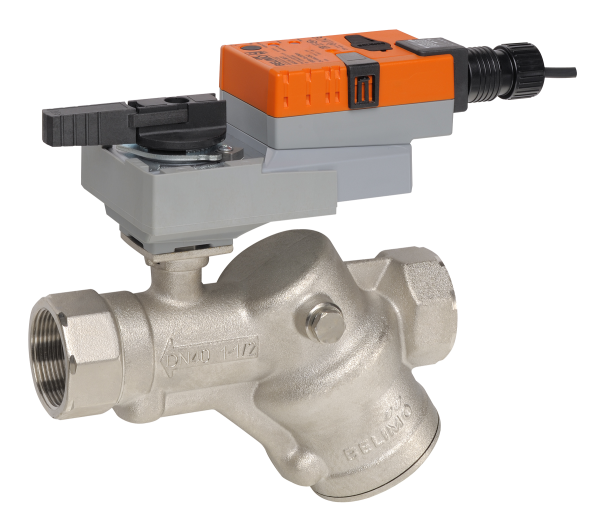Flow Verification and Commissioning With PICCV

Over the years, one of the most frequently asked questions of Belimo technical and sales support has been, “How do I verify flow and/or commission a Pressure Independent Characterized Control Valve (PICCV)?” As green building design and LEED building design begin to increase in volume, the need for proper commissioning tools and procedures is becoming important and necessary. Belimo has responded to this industry requirement by developing a technical document that details proper and industry accepted flow verification and commissioning procedures for PICCV.
If you have ever utilized PICCVs in your mechanical systems, you know that they are very different from pressure dependent control valves. Pressure variations in the system will not affect flow through the valve. The ability to adjust and/or control the flow rate which passes through the pressure independent (PI) valve is not possible via another mechanical device and additional mechanical devices should not be used. This makes the T&B/commissioning process much different than with standard control valves.
Pressure independent valves offer numerous maximum fl ow values in each valve body size. It is also very important to note that most pressure independent valves will not travel a full 90 degrees of rotation when commanded to full design flow position. Flow in a PICCV is adjusted through the maximum angle of ball travel.
Therefore, if the valve’s maximum flow setting is not at the end of the range, the valve will travel to a point less than 90 degrees. This is normal operation for pressure independent control valves.
For proper and accurate flow verification of a PICCV, it is essential that the mechanical contractor install two (2) separate independent pressure/temperature ports (P/Ts) if the PICCV valve body is supplied with integrated ports. It is essential that the mechanical contractor install three (3) independent pressure/ temperature ports if the PICCV is not supplied with integrated ports. Pressure independent valve bodies must have required differential pressure between 5-50 psi pressure across the valve body. This pressure difference across the PICCV is necessary to ensure the valve is working pressure independently.
Because the PICCV is so different from a standard pressure dependent control valve, there are a number of other mechanical system components that if not properly working and/or maintained, can negatively effect the operation of the PICCV. In order to ensure a properly functioning hydronic system utilizing Pressure Independent Characterized Control Valves, the mechanical contractor and/or T&B professional/commissioning agent must verify that the following items have been confirmed before beginning flow verification.
Items to check before beginning flow verification procedure:
• Verify that system is purged of air and filled to proper pressure.
• Verify that each PICCV valve has at least 5 psi but less than 50 psi dP across the valve.
• Verify proper pump operation per manufacturers specifications.
• Verify proper supply water temperature is available and is at design temperature.
• Proper air filter maintenance has been completed.
• Fan belts are in proper working order.
• Heat transfer devices (coils) are clean.
• Strainers are clean.
• All manual shutoff valves are open.
• All bypass valves are closed.
• No automatic or manual balancing valves exist (if they do, they must be set fully open; not to interfere with the pressure independency of the PICCV).
Below is a listing of the accepted procedures for verifying/ commissioning pressure independent control valves. These procedures with detailed explanation can be found at www.piccv.com.
• Procedure #1 (System Verification) - Total System Flow Method Verification for PICCV Cooling Valves/Heating Valves
• Procedure #2 (Terminal Level Verification) – Air Delta T Method Verification for PICCV Cooling Valves/Heating Valves
• Procedure #3 (Terminal Level Verification) – Water Delta T Method Verification for PICCV Cooling Valves/Heating Valves
• Procedure #4 (Terminal Level Verification) – Coil dP (DeltaP) Method Verification for PICCV Cooling Valves and PICCV Heating Valves
• Procedure #5 (Terminal Level Verification) – Integrated PICCV PT Port Method Verification for PICCV Cooling Valves and PICCV Heating Valves
Flow accuracy of the PICCV valve body is ±10%. However, actuator hysteresis and installation can have an effect on measured accuracy of the PICCV assembly (actuator/valve) in the field. The accuracy of the PICCV assembly can be improved in the application.
The maximum flow setting and/or flow accuracy can be adjusted in the field using the Belimo PC Tool or the ZTH-PICCV, which will be released during the second quarter of 2009. Please contact your local Belimo representative to obtain/ purchase this tool and receive your copy of our PICCV flow verification and commissioning document.

